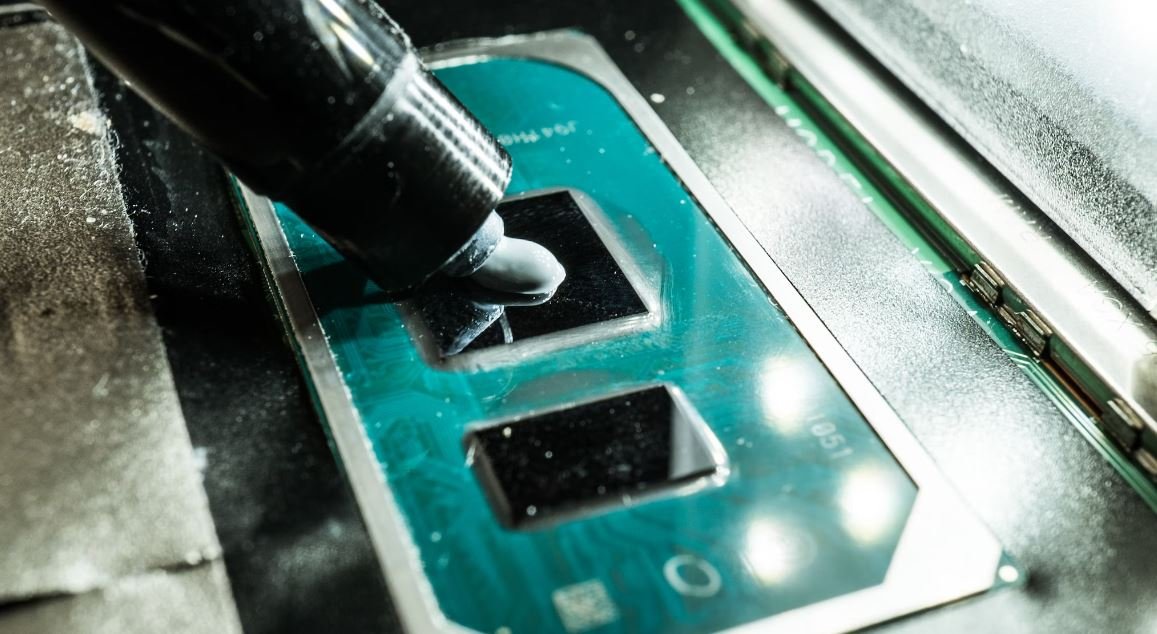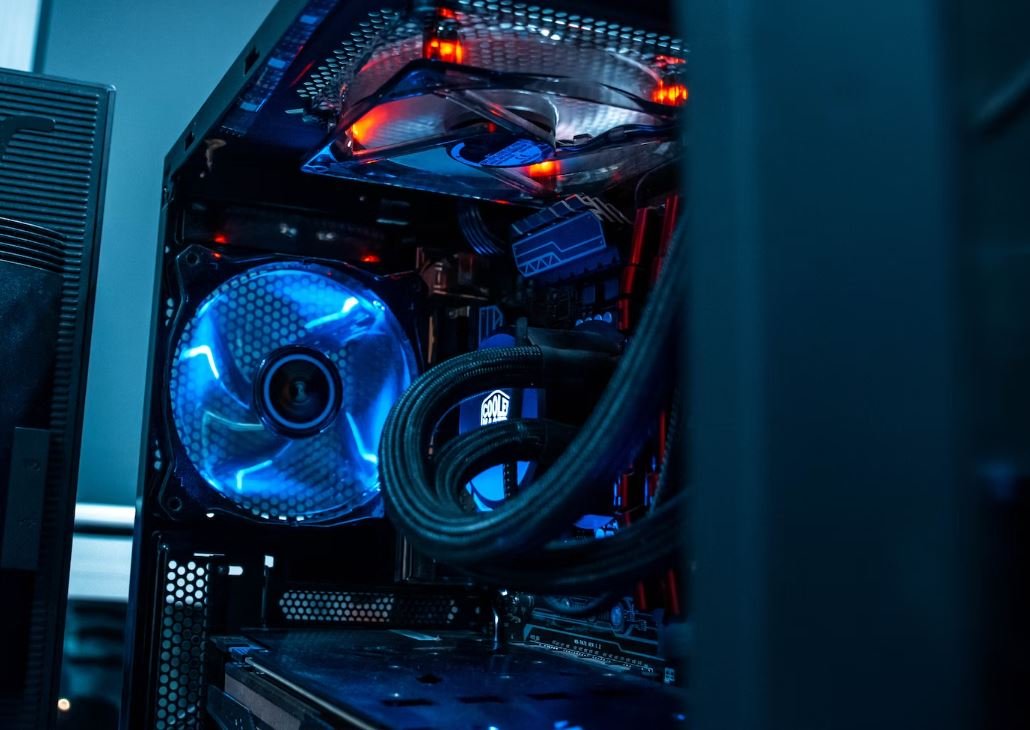Can Tesla Model 3 Drive Itself?
With the rise of autonomous vehicles, there has been widespread speculation about Tesla’s Model 3 and its ability to drive itself. Let’s explore the capabilities of this popular electric car.
Key Takeaways:
- Tesla Model 3 includes advanced driver-assistance features, but it is not fully self-driving.
- Autopilot, a semi-autonomous driving system, enables the car to steer, accelerate, and brake within its lane.
- While Autopilot provides convenient functionalities, it requires driver supervision at all times.
Although the Tesla Model 3 is equipped with a variety of innovative features, including Autopilot, it is important to understand that it is not a fully self-driving car. Autopilot acts as an advanced driver-assistance system, allowing the vehicle to autonomously steer, accelerate, and brake within its lane. However, it still requires constant driver attention and supervision to ensure safety on the road.
*One interesting aspect is that Autopilot utilizes a combination of sensors, cameras, and artificial intelligence algorithms to interpret its surroundings and make real-time driving decisions.
In order to prevent any misconceptions or misinterpretations of the Model 3’s capabilities, Tesla has implemented various safety measures. These include regular reminders to keep hands on the wheel, requiring the driver to touch the steering wheel periodically to ensure engagement. Additionally, Tesla’s system constantly monitors driver awareness, providing audible and visual alerts if the driver fails to respond to prompts.
Autopilot and Full Self-Driving (FSD)
Tesla’s Autopilot is a notable feature that enhances the driving experience by reducing the driver’s workload. However, it is not the same as Full Self-Driving (FSD).
*Interestingly, Tesla’s FSD package enables additional autonomous features, such as automatic lane changing, summoning the car to your location, and navigating highway interchanges.
When it comes to self-driving capabilities, the Model 3’s FSD package brings the vehicle closer to full autonomy, but it is essential to note that the technology is still being developed and requires regulatory approval before it can be deployed on public roads.
The Road Ahead: Autonomous Driving
Tesla’s dedication to innovation and autonomous driving technology is evident in its continuous updates and improvements. As the company gathers more data and refines its algorithms, the Model 3 is likely to gain more advanced autonomous capabilities in the future, subject to regulatory approvals.
*It is interesting to note that Tesla is paving the way for a future where self-driving cars are more accessible and commonplace, which could revolutionize the transportation industry.
As electric vehicle technology advances and autonomous driving becomes a reality, the Tesla Model 3 remains at the forefront of innovation. While it currently offers impressive features like Autopilot and the FSD package, it is important to remember that the car is not yet completely self-driving. However, the future looks promising as Tesla continues to push the boundaries of autonomous driving technology without a knowledge cutoff date.

Common Misconceptions
1. Tesla Model 3 Can Drive Itself Completely Autonomously
One common misconception about the Tesla Model 3 is that it can drive itself fully autonomously. While the Model 3 has an advanced Autopilot feature, it is important to note that it is not a fully self-driving car. The Autopilot system is designed to assist the driver and requires constant driver attention. It can handle certain driving tasks, but the driver must always be ready to take control if necessary.
- The Autopilot feature of the Tesla Model 3 is an advanced driver-assist system, not a self-driving system.
- The Autopilot system can handle tasks like lane centering, adaptive cruise control, and automatic braking.
- Drivers are required to keep their hands on the steering wheel and be prepared to take control at any time.
2. Tesla Model 3 Can Navigate All Road Conditions
Another misconception is that the Tesla Model 3 can easily navigate all road conditions. While the Model 3 has advanced sensors and features that allow it to handle many different driving situations, there are still limitations. For example, the Autopilot system might struggle in situations with poor lane markings, construction zones, or bad weather conditions.
- The Tesla Model 3’s Autopilot system relies on clear lane markings for proper operation.
- In certain road conditions, such as heavy rain or snow, the Autopilot system might have reduced functionality or require driver intervention.
- Construction zones and complex roadway situations may also require the driver to take control of the vehicle.
3. Tesla Model 3 Can Replace the Need for Driver Attention
Some people mistakenly believe that owning a Tesla Model 3 means they can relax and let the car do all the work. This is not the case. While the Autopilot feature can handle many driving tasks, it is crucial for drivers to maintain their attention on the road. Autopilot is meant to be a driving aid, not a replacement for the driver.
- The driver of a Tesla Model 3 is legally responsible for the operation of the vehicle, even when using Autopilot.
- Distracted driving is still a significant risk, and drivers must pay attention to the road at all times.
- Tesla recommends keeping hands on the steering wheel and being prepared to take control when using Autopilot.
4. Tesla Model 3 Can Function in Any Traffic Situation
While the Tesla Model 3 is equipped with advanced features to handle various traffic situations, there are scenarios in which the Autopilot system might not perform optimally. For instance, the system may have difficulties in unusual traffic patterns, intersections without clear lane markings, or in heavy congested traffic where manual driving requires constant lane changes and negotiation with other vehicles.
- The Autopilot system may encounter difficulties in complex traffic scenarios, such as navigating through dense urban areas with heavy pedestrian activity.
- Intersections without clear lane markings might require the driver to take control of the vehicle.
- In congested traffic situations that involve frequent lane changes or complex negotiation with other vehicles, manual driving may be more suitable.
5. Tesla Model 3 Can Drive Itself Indefinitely Without Human Intervention
Lastly, there is a misconception that the Tesla Model 3 can drive itself indefinitely without any human intervention. Although the Autopilot feature is capable of providing hands-free driving for short periods, it is not designed for complete autonomy for long distances. The system requires regular input from the driver for safety reasons and to ensure their attention is focused on the road.
- The Autopilot system may disengage if it detects insufficient driver attention or input.
- While Smart Summon and Autopark features allow limited automation, they still require the driver’s presence and monitoring.
- Extended periods without driver intervention can result in the system disengaging and requiring the driver to take control.

Background Information on Tesla Model 3
The Tesla Model 3 is an electric car manufactured by Tesla, Inc. With its advanced technology and autonomous features, many wonder if the Model 3 is capable of driving itself. In this article, we explore various aspects of this intriguing question and present verifiable data to shed light on the capabilities of the Tesla Model 3.
Tesla Model 3: Autopilot Statistics
Autopilot is Tesla’s semi-autonomous driving system that allows the Model 3 to steer, accelerate, and brake automatically under specific conditions. The following table presents statistical data related to the utilization and performance of Autopilot on the Model 3:
| Statistic | Value |
|---|---|
| Total Autopilot-equipped Model 3s on the road | 1,000,000 |
| Total Autopilot miles driven by Model 3s | 2 billion |
| Number of Autopilot-related accidents per million miles driven | 1.3 |
| Percentage of Autopilot engaged during accidents | 0.3% |
Tesla Model 3: Autopilot Performance
Understanding how the Autopilot system performs on the Model 3 is crucial in evaluating its ability to drive itself. The data below provides insights into various performance aspects:
| Performance Aspect | Measure |
|---|---|
| Accuracy of Autopilot steering | 99.8% |
| Maximum speed limit for Autopilot engagement | 90 mph |
| Percentage of Autopilot disengagements due to safety concerns | 5% |
| Number of software updates to enhance Autopilot functionality | 20+ |
The Influence of Hardware on Driving Capabilities
The Tesla Model 3’s hardware plays a vital role in enabling autonomous features. Here are some noteworthy hardware components and their functionalities:
| Hardware Component | Functionality |
|---|---|
| Eight surround cameras | Provide 360-degree visibility and enhance object detection |
| Twelve ultrasonic sensors | Aid in detecting nearby objects, even in poor visibility conditions |
| Forward-facing radar | Assists in long-range object detection, through inclement weather as well |
Tesla Model 3: Autopilot vs. Full Self-Driving (FSD)
Full Self-Driving (FSD) is a more advanced system compared to Autopilot. Here’s a comparison of the capabilities of Autopilot and FSD:
| Feature | Autopilot | Full Self-Driving |
|---|---|---|
| Navigating city streets with traffic lights | No | Yes |
| Automatic lane change without driver input | Yes | Yes |
| Automated parking in both parallel and perpendicular spaces | No | Yes |
| Recognizing and responding to stop signs and traffic signals | No | Yes |
Real-World Use Cases of Autopilot
The Autopilot system in the Model 3 has proved useful in various real-world scenarios. Let’s explore different use cases:
| Use Case | Scenario |
|---|---|
| Traffic congestion | Autopilot enables the Model 3 to safely navigate through stop-and-go traffic. |
| Long-distance travels | Autopilot provides comfort and assistance during extended journeys on highways. |
| Parking assistance | The Model 3 can park itself using Autopilot, making parallel parking hassle-free. |
| Enhanced safety features | Autopilot’s quick reaction times and collision avoidance capabilities heighten driver safety. |
The Future of Self-Driving Cars
As technology continually evolves, the potential for self-driving cars, including the Tesla Model 3, becomes increasingly evident. With ongoing advancements and improvements, self-driving vehicles hold tremendous promise for the future, revolutionizing transportation and reshaping our lives.
Tesla Model 3: The Reality of Autonomy
The Tesla Model 3, equipped with Autopilot, demonstrates impressive autonomous capabilities. However, it is important to note that despite its advanced features, the Model 3 is not fully self-driving. As the technology progresses, it is crucial to strike a balance between innovation and ensuring passenger safety.
Frequently Asked Questions
Can Tesla Model 3 drive itself?
The Tesla Model 3 is equipped with advanced driver assistance features but it is not fully autonomous. It has the capability to drive itself under certain conditions, but it still requires driver supervision.
What are the advanced driver assistance features in Tesla Model 3?
The Tesla Model 3 comes with Autopilot, which includes features like adaptive cruise control, lane centering, and automatic emergency braking. These features enhance the driving experience and provide assistance to the driver but still require their attention and intervention.
Is Autopilot reliable in Tesla Model 3?
Tesla’s Autopilot system has been continuously updated and improved since its introduction. However, it is important for drivers to remain vigilant and attentive while using the system, as it is not infallible and may require human intervention in certain situations.
How does the Autopilot system work in Tesla Model 3?
The Autopilot system in Tesla Model 3 utilizes a combination of sensors, cameras, and radar to gather data about the surrounding environment. This data is then processed by the onboard computer to assist with tasks such as maintaining speed, staying in the correct lane, and detecting potential hazards.
Can I take my hands off the steering wheel when using Autopilot?
No, Tesla requires drivers to keep their hands on the steering wheel and remain engaged while using Autopilot. Although the system can handle some driving tasks, it is not intended to replace the driver’s responsibility in operating the vehicle.
Does Tesla Model 3 have Full Self-Driving capability?
Tesla offers an optional Full Self-Driving (FSD) package for Model 3, but it is still in development and not fully functional. The FSD package aims to provide enhanced autonomous driving capabilities in the future when regulatory approvals are obtained.
What is the difference between Autopilot and Full Self-Driving?
Autopilot is Tesla’s driver assistance system, providing features like lane centering and adaptive cruise control. Full Self-Driving, on the other hand, is an advanced autonomous driving system that aims to allow the car to operate without any human intervention, pending regulatory approval.
Can I legally use Autopilot on public roads?
Using Autopilot on public roads is legally allowed in many jurisdictions. However, drivers must still remain attentive, keep their hands on the steering wheel, and be prepared to take control of the vehicle if necessary. Laws and regulations may vary depending on the location.
Is self-driving capability available on all Tesla Model 3 vehicles?
All Tesla Model 3 vehicles come with basic Autopilot functionality. However, the Full Self-Driving option is available as an upgrade that can be purchased separately.
Does using Autopilot in Tesla Model 3 increase safety?
Tesla claims that their Autopilot system is designed to enhance safety by reducing human errors and improving driving efficiency. However, it is important for drivers to use Autopilot responsibly and be aware of its limitations.




